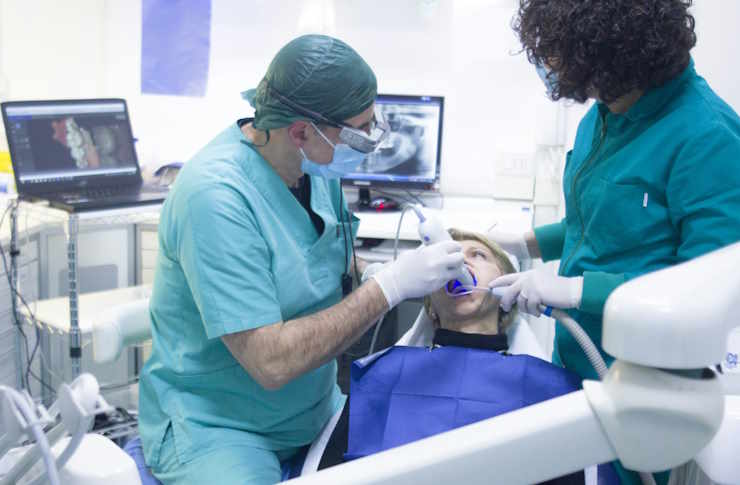Liposuction Explained: A Practical Guide to Fat Removal
Liposuction is a trusted surgical option for removing persistent fat from targeted areas and reshaping the body. Learn how modern techniques work, what clinical research says about safety and satisfaction, typical recovery timelines, and how it compares to non-surgical alternatives like CoolSculpting. This guide helps you set realistic expectations and plan for costs, downtime, and follow-up care.

Liposuction is a widely used surgical method for removing localized fat deposits to refine body contours. It permanently eliminates fat cells from treated zones through small incisions, helping to improve proportions and silhouette. While it is not a substitute for overall weight loss, liposuction is a reliable option for addressing stubborn pockets of fat that don’t respond to diet and exercise.
Clinical trial evidence and safety profile
Multiple clinical trials and observational studies have examined liposuction’s safety and effectiveness when performed by experienced surgeons. Research consistently reports high patient satisfaction and durable improvements in contour when procedures are combined with a healthy lifestyle. Advances in technique — including tumescent anesthesia, ultrasound-assisted and laser-assisted approaches, and better perioperative protocols — have reduced complications and shortened recovery compared with older methods.
Key findings from the literature include low rates of serious complications in properly selected patients, reliable aesthetic outcomes, and sustained contour changes over time, especially when patients maintain stable weight. Careful patient selection, adherence to surgical safety standards, and choosing a board-certified plastic surgeon remain critical factors in minimizing risk and maximizing results.
What to expect: results and recovery timeline
Initial improvements from liposuction are often visible within a few weeks as swelling and bruising begin to subside. However, final contour and skin retraction can take longer; most patients notice the true result between three and six months after the procedure once residual swelling has resolved.
Typical recovery involves a short period of downtime. Many people return to light activities within a few days and resume normal daily tasks in 1–2 weeks, although strenuous exercise should usually be avoided for several weeks. Wearing compression garments is commonly recommended for several weeks to control swelling, support tissues, and help the treated areas conform to new contours. Pain and bruising are generally manageable with prescribed or over-the-counter medications and improve steadily over the first two weeks.
Following post-operative instructions, maintaining stable weight, and attending follow-up appointments are all important for optimizing outcomes and reducing the likelihood of unevenness or other issues.
Comparing surgical and non-surgical fat reduction options
Below is a concise comparison of common fat-reduction treatments, highlighting typical procedure times, recovery expectations, and when results usually become apparent.
| Treatment Type | Procedure Time | Recovery Period | Results Timeline |
|---|---|---|---|
| Traditional Liposuction | 2–4 hours | 1–2 weeks | 3–6 months |
| Laser-Assisted Liposuction | 1–2 hours | 3–7 days | 2–4 months |
| CoolSculpting (Non-surgical) | 35–60 minutes per area | Minimal to none | 2–3 months |
| Ultrasound Therapy (Non-surgical) | 30–60 minutes per area | Minimal to none | 2–3 months |
Prices, rates, or cost estimates mentioned in this article are based on the latest available information but may change over time. Independent research is advised before making financial decisions.
Surgical techniques like traditional or laser-assisted liposuction typically deliver faster and more pronounced volume removal than non-surgical alternatives, which are better suited for modest fat reduction and require multiple sessions. Non-invasive options often have little to no downtime, but their results are usually more gradual and less dramatic.
Costs and practical considerations
The price for liposuction varies depending on factors such as the number and size of treatment areas, the technique chosen, surgeon experience, facility fees, anesthesia, and geographic location. Typical ranges noted in practice are approximately $3,000 to $8,000 per treatment area, but total costs can increase with multiple zones or additional services. Insurance generally does not cover liposuction because it is considered elective and cosmetic, though some providers and clinics offer financing plans to help spread payments.
When evaluating options, consider the surgeon’s credentials and experience, before-and-after photos, patient reviews, and whether the facility is accredited. Discuss expected results, potential risks (such as infection, contour irregularities, or fluid imbalance), and the required recovery timeline during a thorough consultation. Realistic expectations and a commitment to healthy habits after surgery are essential for long-term satisfaction.
Making an informed decision
Liposuction can provide significant, lasting improvement in body shape for patients with localized fat resistant to lifestyle measures. The best outcomes come from working with a board-certified plastic surgeon, following pre- and post-operative instructions closely, and understanding the realistic timeline for healing and results.
This article is for informational purposes only and should not be considered medical advice. Please consult a qualified healthcare professional for personalized guidance and treatment.
Liposuction is an effective tool for targeted fat removal, but success hinges on appropriate patient selection, expert surgical technique, and postoperative care. If you’re considering the procedure, gather information, compare treatment options, review credentials, and plan for a recovery period that supports a safe and smooth return to your routine.






